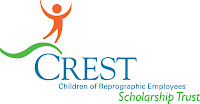
At IRgA earlier this year, PlanWell and The PEiR Group released a fantastic new product, one that establishes the GOLD standard for planroom features.
This new feature from PlanWell and KIP connects KIP printers directly with PlanWell Enterprise, the world’s largest planroom.
Your customers will have touch-screen access to their PlanWell documents via the KIP IPS controller. With just a few touches, your customers can be instantly viewing and printing their PlanWell documents! It’s as easy as pointing your finger.
This new technology is compatible with all the KIP IPS systems (including your existing FMs), however it is ideal when paired with the new KIP3100, also released at the IRgA.
The new KIP 3100 significantly improves the KIP 3000 technology, already the most widely distributed wide-format LED machine. The 3100 is 50 percent faster than the 3000 and features other improvements as well.
This partnership between PlanWell and KIP has allowed us to bring you this technology. The PlanWell EasyPrint for KIP technology sets PlanWell apart from other planrooms by offering jobsite and convenience printing like nobody else can.
This new feature from PlanWell and KIP connects KIP printers directly with PlanWell Enterprise, the world’s largest planroom.
Your customers will have touch-screen access to their PlanWell documents via the KIP IPS controller. With just a few touches, your customers can be instantly viewing and printing their PlanWell documents! It’s as easy as pointing your finger.
This new technology is compatible with all the KIP IPS systems (including your existing FMs), however it is ideal when paired with the new KIP3100, also released at the IRgA.
The new KIP 3100 significantly improves the KIP 3000 technology, already the most widely distributed wide-format LED machine. The 3100 is 50 percent faster than the 3000 and features other improvements as well.
This partnership between PlanWell and KIP has allowed us to bring you this technology. The PlanWell EasyPrint for KIP technology sets PlanWell apart from other planrooms by offering jobsite and convenience printing like nobody else can.



